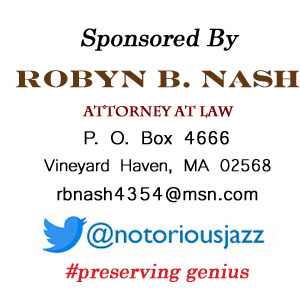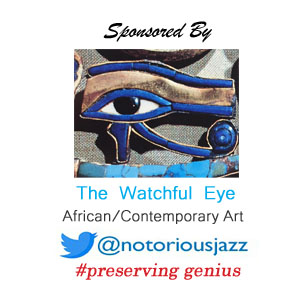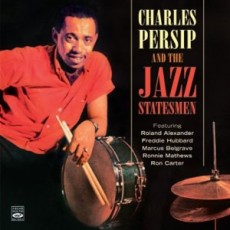
Daily Dose Of Jazz…
Charli Persip was born Charles Lawrence Persip on July 26, 1929 in Morristown, New Jersey. The drummer became known as Charlie but in the 1980s dropped the “e” to become Charli.
He played with Tadd Dameron in 1953, then toured and recorded with Dizzy Gillespie’s big and small bands between 1953 and 1958 before joining with Harry “Sweets” Edison quintet. He followed this stint with the Harry James Orchestra before forming his own group, the Jazz Statesmen, with Roland Alexander, Freddie Hubbard and Ron Carter in 1960.
During this period Persip also recorded with Lee Morgan, Dinah Washington, Melba Liston, Kenny Dorham, Zoot Sims, Red Garland, Gil Evans, Don Ellis, Eric Dolphy, Rahsaan Roland Kirk and Gene Ammons among others.
Charli would go on to record on the legendary “Eternal Triangle”, with Sonny Rollins and Sonny Stitt on “Sonny Side Up” and from 1960 to 1973 toured as a drummer and conductor with Billy Eckstine. As an educator has given drum and music instruction for Jazzmobile, Inc. in New York since 1974 and is currently an Associate Professor at the New School for Jazz and Contemporary Music.
In the mid 1980s Persip led Superband that evolved into Suppersound, his jazz big band. Supersound’s first album recorded for Stash titled Charli Persip and Superband was followed by Superband 11, No Dummies Allowed and Intrinsic Evolution. Drummer Charli Persip has recorded 27 albums as a leader and a sideman and continues to record and perform.
More Posts: drums
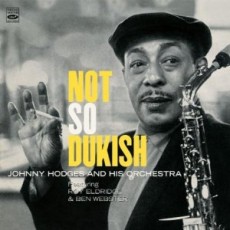
Daily Dose Of Jazz…
Johnny Hodges was born John Keith Hodges on July 25, 1906 in Cambridge, Massachusetts but soon after the family moved to Boston. Growing up with baritone saxophonist Harry Carney and saxophonists Charlie Holmes and Howard E. Johnson, he started out on drums and piano and was mostly self-taught. He became good enough to play the piano at dances in private homes. By the time he was a teenager, he took up the soprano saxophone and around this time he picked up the nickname “Rabbit”, either for his ability to outrun truant officers or his nibbling on lettuce and tomato sandwiches.
When Hodges was 14 he saw Sidney Bechet, introduced himself, played a tune, received encouragement to continue to play and grew a name for himself in the Boston area till he moved to New York in 1924, able to play both the alto and soprano saxophone.
Hodges started playing with Lloyd Scott, Sidney Bechet, Lucky Roberts and Chick Webb. In 1928 he joined the Ellington orchestra and became one of the identifying voices on both alto and soprano sax. Leaving Duke in 1951 to lead his own band, he returned four years later shortly before Ellington’s 1956 performance at the Newport Jazz Festival. Ellington would write pieces like “Confab with Rab”, “Jeep’s Blues”, “Sultry Sunset”, “Hodge Podge” and “Prelude To A Kiss” among many others that featured Hodge.
Johnny’s pure tone and economy of melody on both the blues and ballads won him admiration from musicians of all eras and styles, from Ben Webster to John Coltrane, who both played with him when he had his own orchestra in the 1950s, to Lawrence Welk, who featured him in an album of standards.
Alto saxophonist Johnny Hodges’ last recordings are featured on the New Orleans Suite album and his final performances were at the Imperial Room in Toronto, less than a week before his death from a heart attack on May 11, 1970. He is considered one of the definitive alto saxophones players of swing in the Big Band Era and of mainstream jazz.
More Posts: saxophone
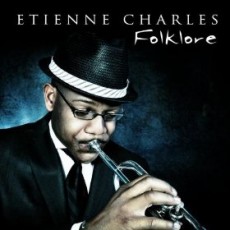
Daily Dose Of Jazz…
Etienne Charles was born in Trinidad on July 24, 1983 into a family with four generations of musicians. He was immersed in the folk music of his country suffused with the sounds of calypso, steel pan and African Shango drumming to create the diverse colors of his harmonic palette.
The Bishop Anstey Junior School proved to be a potent incubator where he began playing the recorder, followed by trumpet at 10 and formal lessons. An athlete with prowess, Etienne eclipsed his musical success with academics with football, cricket, swimming and water polo teams at Fatima College, winning the Provincial Cup three times, first at the age of 13. He studied privately, at the Brass Institute, become a member of the band, added drums and percussion, landed his first job in a pit orchestra, worked with his father on the road during carnival and with Phase II for the Panorama steel pan competition.
By sixteen Charles was attending the summer performance program at Berklee College of Music, then on to Florida State University, placed or won several competitions, performed at North Sea Jazz Festival, attended the Henry Mancini Institute and received his Master’s from Julliard School of Music.
Etienne has toured, performed or recorded with the Juilliard Jazz Orchestra, Grammy Award winners Roberta Flack, Wynton Marsalis, Johnny Mandel, Ralph MacDonald, Maria Schneider and the Count Basie Orchestra as well as Marcus Roberts, Monty Alexander, Frank Foster, Wycliffe Gordon, Rene Marie, Lord Blakie and David Rudder.
He released his debut album “Culture Shock” in 2006 was followed by “Folklore” three years later and then “Kaiso”. Trumpeter and composer Etienne Charles stands at the vanguard of a new generation of Caribbean musicians and he continues to record, perform and tour.
More Posts: trumpet
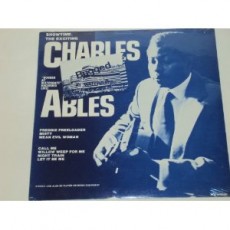
Daily Dose Of Jazz…
Charles Ables was born on July 23, 1943 in Mississippi and started out on his musical career playing the guitar. He worked with Ray Charles prior to switching to bass to become a member of the Shirley Horn Trio in the early Eighties. He would tour the world and record with her on Steeplechase and then Verve record labels over the next three decades
Ables is heard on guitar as well as bass on several of these, including You Won’t Forget Me, which featured guest contributions from both Miles Davis and Wynton Marsalis, Light Out of Darkness, Horn’s tribute to Ray Charles, I Thought About You, Close Enough For Love, Here’s To Life and the Grammy-winning I Remember Miles.
As well as accompanying Shirley Horn, Charles is heard with the trio on Carmen McRae’s last album in 1990, Sarah – Dedicated to You, in which Horn is featured in her often forgotten role as a pianist. He recorded in similar circumstances with Toot Thielemans on his album For My Lady, with Joe Williams and as a leader.
Bassist and guitarist Charles Ables passed away on October 8, 2001 in Washington, D. C.
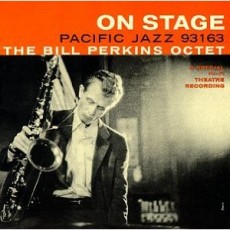
Daily Dose Of Jazz…
Bill Perkins was born on July 22, 1924 in San Francisco, California, grew up in Chile, moved to Santa Barbara and served in the military during World War II. While living in Santa Barbara after his discharge, he studied music and engineering at Cal-Tech at the University of California and a Westlake College.
Bill started out performing in the big bands of Woody Herman and Jerry Wald. He also worked for the Stan Kenton orchestra, a move that subsequently led to his entry into the cool jazz idiom. He became one of the coolest and a major influence in the cool school on the West Coast jazz scene.
Perk, as he was known, started recording as a leader in 1956 with John Lewis on Grand Encounter and sessions with Art Pepper, Bud Shank and Richie Kamuca, to name just a few. During the 60s he held had a dual career as a studio musician and recording engineer. From 1970-1992 he held a chair in The Tonight Show band and a member of the Bud Shank Sextet.
Though he played baritone, alto, soprano and flute he was best known for his tenor and most remembered for his baritone and tenor work with The Lighthouse All-Stars. Over the course of his career Bill Perkins recorded twenty-three albums as a leader and sideman up until the time of his death on August 9, 2003.



